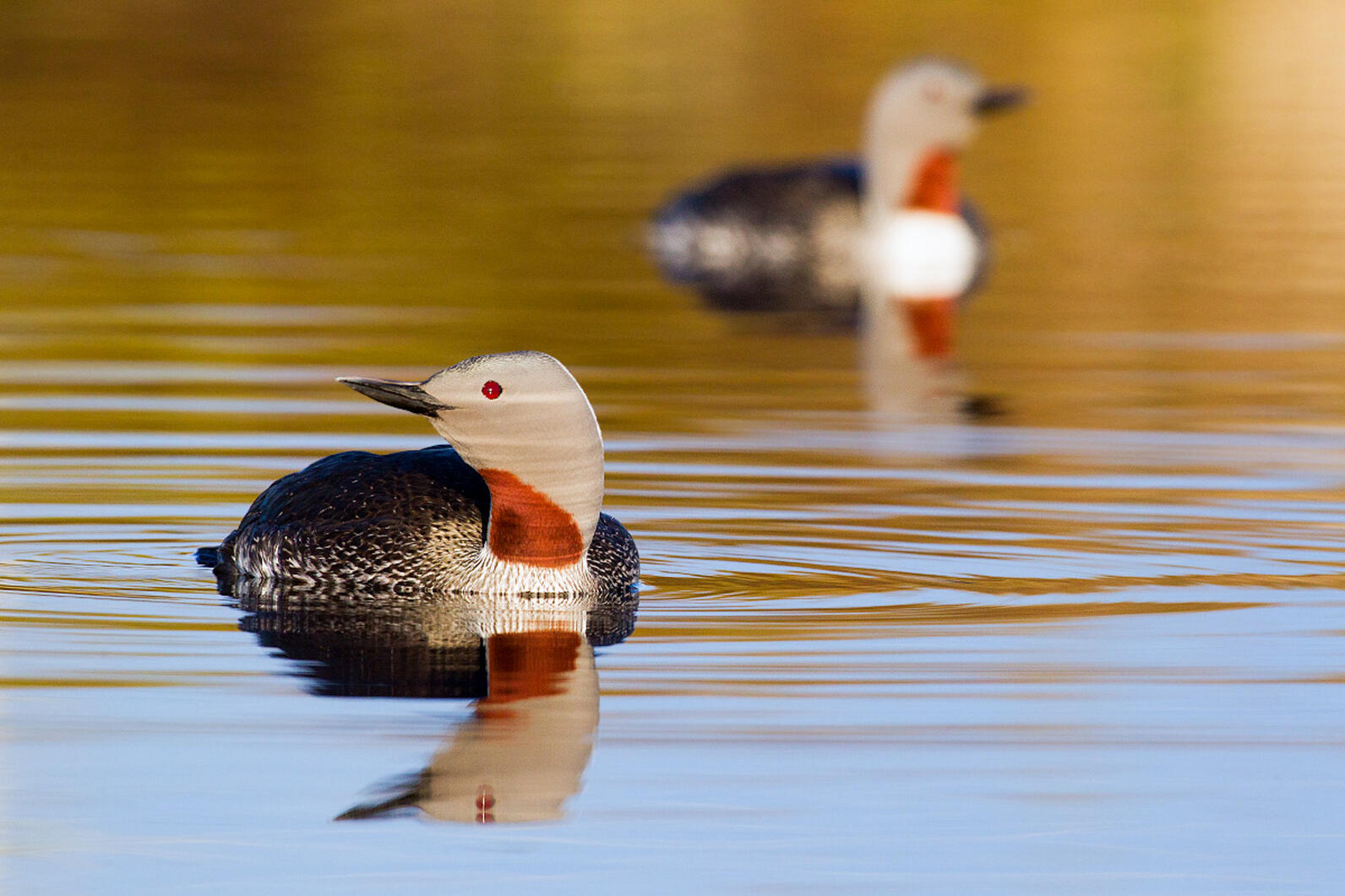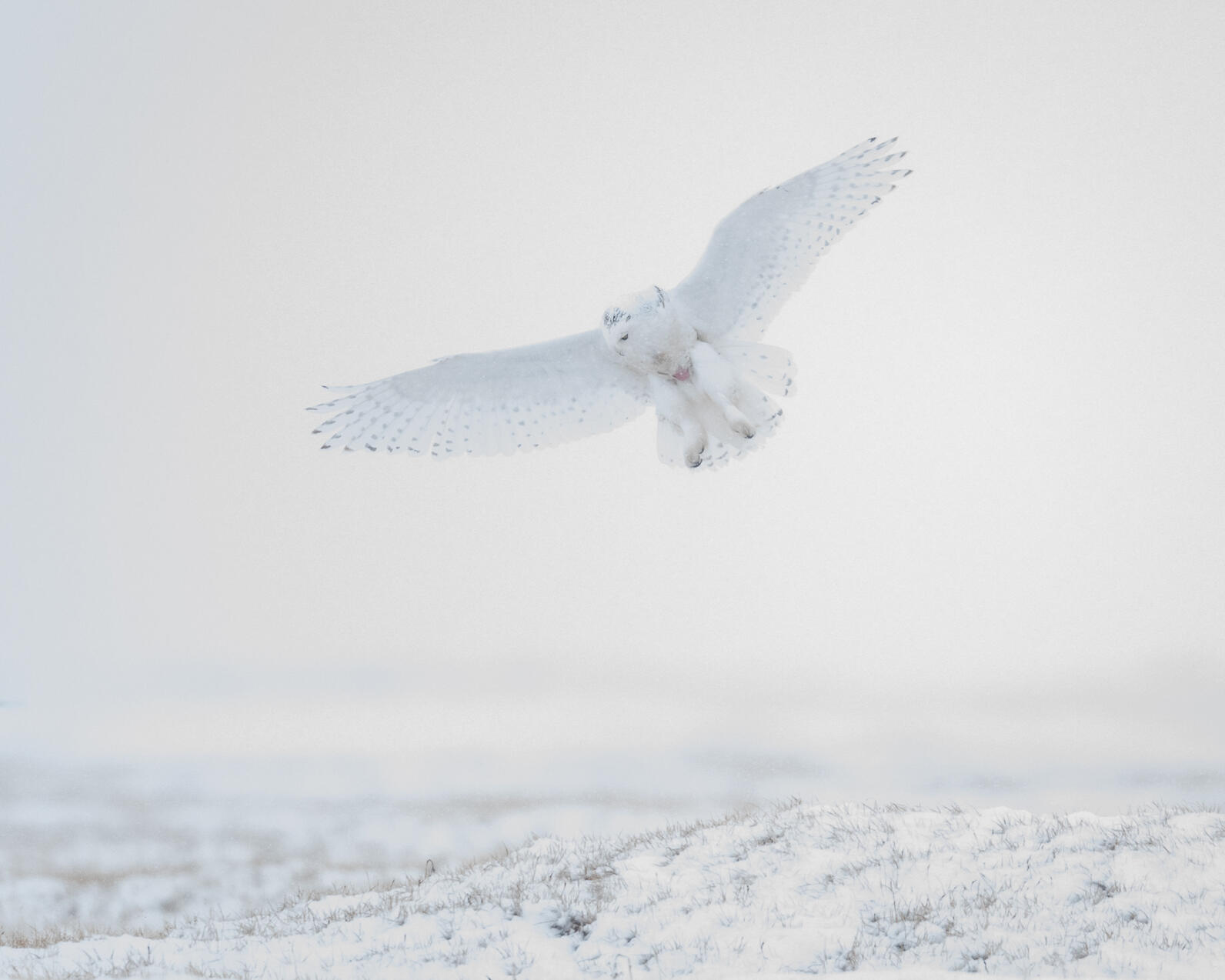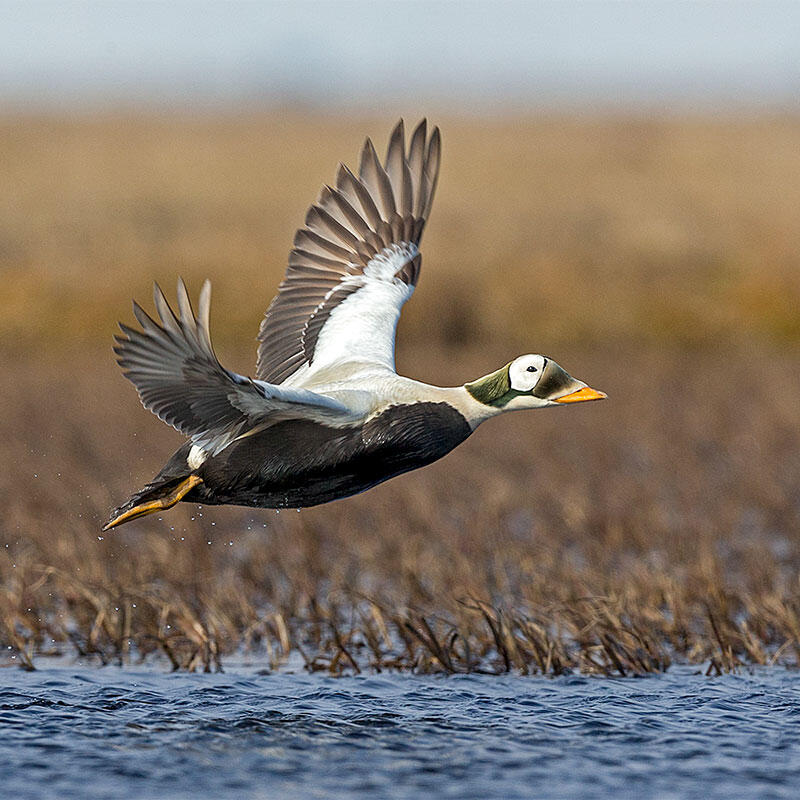On Wednesday, September 6, 2023, the Biden administration and the Department of the Interior announced a three-part suite of constructive and historic actions that would strengthen conservation protections and help address climate change in America’s fragile Arctic.
The news is a package of information we’d like to further explain. Three specific announcements were made about two distinct landscapes, but the public only has to take one action (below) to advocate for Arctic birds, wildlife, and Indigenous culture.
Three Announcements, Two Regions
Let’s start by breaking down the difference between two regions in northern Alaska—the Arctic National Wildlife Refuge (Refuge) and the National Petroleum Reserve–Alaska (NPR–A) or Western Arctic—together known as America’s Arctic.

Arctic National Wildlife Refuge
First, the 19.6 million-acre Refuge is the largest national wildlife refuge in the United States. Located in Alaska's northeast corner, it’s home to polar and grizzly bears, wolves, the 197,000-animal Porcupine Caribou Herd, and millions of migratory birds. Birds migrate from across the United States and six continents in order to feed, nest, and raise their young in the Refuge—known as the “World's Bird Nursery.”
The entire ecosystem, both north and south of the Brooks Range, including the biologically rich Coastal Plain, was set aside by President Dwight D. Eisenhower as the Arctic National Wildlife Range in 1960. It was enlarged and established as the Arctic National Wildlife Refuge in 1980. That same year, Congress closed the Coastal Plain to oil development.
In 2017, then-President Trump signed a tax bill into law that included a provision that opened the Refuge to oil and gas drilling to offset massive corporate tax cuts. In January 2021, an oil and gas lease sale was held with the Alaska Industrial Development and Export Authority (AIDEA)—an Alaska-state-owned corporation— and two other companies being the only bidders. However, later that month, the Biden Administration halted all oil and gas activity in the Refuge.
On September 6, 2023, the Department of the Interior announced it was canceling the illegal Trump-issued oil and gas leases on the Coastal Plain of the Refuge. This was the first announcement.
The second announcement came when the Biden administration initiated the next step in the much-needed process of reassessing the environmental impacts of the Refuge’s Trump-era oil and gas leasing program. The Biden administration did so by issuing a draft supplemental environmental impact statement (SEIS) that better recognizes the conservation needs and cultural distinction of the Refuge.
“We applaud the Biden administration for taking these meaningful steps to safeguard the ecologically and culturally irreplaceable Arctic National Wildlife Refuge. Birds migrating from every state and numerous countries, connecting people and communities around the globe, rely on this landscape to complete their life cycle,” says David Krause, Interim Executive Director of Audubon Alaska. “Canceling oil-and-gas leases in the Arctic Refuge ensures the health of the world's bird nursery and the protection of Indigenous lifeways.”
But there is more work to be done beyond the draft SEIS.
“We know that our sacred land is only temporarily safe from oil and gas development,” says Bernadette Demientieff, the Executive Director of the Gwich’in Steering Committee, an Alaska Native group opposed to drilling. “We urge the administration and our leaders in Congress to repeal the oil and gas program and permanently protect the Arctic Refuge.”

Western Arctic
Next, the 23-million-acre National Petroleum Reserve-Alaska (NPR–A), better known as the Western Arctic, is arguably the most remote landscape in the United States. Despite its unfortunate and misleading name, the Reserve supports incredible bird and wildlife habitat, earning the name “America’s Bird Basket.”
The Western Arctic is home to five “Special Areas”—the Utukok Uplands, Kasegaluk Lagoon, Colville River, Peard Bay, and Teshekpuk Lake. Teshekpuk Lake alone teems with birds and is one of the most ecologically important wetlands in the entire Arctic. This sensitive area provides habitat for tens of thousands of molting geese, threatened species like the Spectacled Eider, nesting shorebirds and waterfowl, and supports the life cycle of the 40,000-head Teshekpuk Caribou Herd. Birds from this region and across the Western Arctic disperse along all four major flyways of the United States, as well as to Asia and beyond.
Recently, large oil and gas projects, including the Willow Master Development Plan, have been approved in the region, making the need for further protection timely and extremely important. Thankfully, on September 6, 2023, the Biden administration initiated a new conservation rule that would strengthen protections for the 13 million acres of designated Special Areas and establish a process for creating additional Special Areas within the region. This was the third announcement.
“The lands and waters of Alaska’s Western Arctic are like nowhere else on Earth. This landscape supports some of the most important avian habitat on the planet and is culturally irreplaceable for numerous communities across northern and western Alaska," Krause says. "This announcement is an important and necessary step to ensure that the Western Arctic’s designated Special Areas and globally unique values are more meaningfully protected. Now the administration needs to get this rulemaking done—and done well.”

How to Take Action
The three historic and constructive announcements are a good start, but these actions are not yet finalized. And you can take action now.
Concerning the Arctic Refuge, the government's environmental review must be comprehensive and ensure the health of the Refuge and the protection of culturally irreplaceable resources, such as the Porcupine Caribou Herd. The analysis should include the best available conservation and climate change science, and complete information on Indigenous ways of life.
Next, the administration needs to get this rulemaking for the Western Arctic done--and done well. This rule must ensure the strongest protections possible for invaluable regions like the Teshekpuk Lake Special Area, a globally important habitat for Yellow-billed Loons, Spectacled Eiders, Dunlins, and other vulnerable species like migrating caribou and polar bears—all of which rely on the Arctic's largest lake and surrounding wetlands complex for food and protection.
What’s Next
After taking action for America’s Arctic, there are multiple things you can do to stay abreast of this developing and historic topic. You can:
- Sign up for Audubon Alaska alerts for news on the Refuge and Western Arctic
- Find us on Facebook, Instagram, and X to help us spread the word about advocating for America’s Arctic
- Donate to the Arctic Fund, which supports our Arctic programs
Your advocacy is producing results. We couldn’t do this work without you. Thank you for your continued support.









